Este artículo está también disponible en / This post is also available in: Spanish
In the previous blog Analyzing and improving access to culture we told the story of the Pase Cultural program evaluation. Behind that story is an open code tool that was key in analyzing the big, complex datasets generated by the program. The tool, called Georeferenced Program Evaluation (GPE), was designed for detailed geospatial analysis to measure the effectiveness of a program that links location and poverty with access to cultural goods and services.
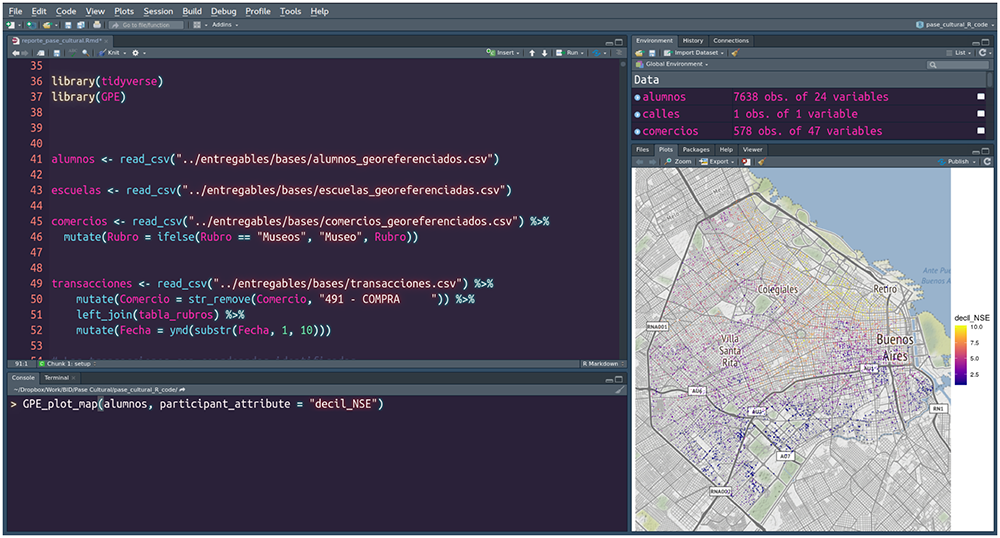
GPE is written in R, an open-source language and programming environment for statistical analysis. The fact that the R language (and the tools written in it) is open-source means that they are open to anyone to access and use at no cost, promoting the dissemination of analyses and reuse of tools – either as-is, or with collaborative improvements. This article will provide a simplified reading of the coding and highlight the potential use of the geo-referenced analysis of public policies.
In the case of the Pase Cultural (Cultural Pass) program, the geographical evaluation included the following sources of information:
- Database of beneficiaries enrolled in the program
- Database of educational establishments adhered to the program
- Database of businesses or institutions partnering with the program
- Program transactions, respecting privacy protocols, aggregated by gender, area of residence, area of educational establishment, area of cultural supply
- Connectivity via Google maps
- Socio-economic data from the 2010 Census of Argentina.
Considering the sources of information, we would like to prepare different outputs. The coding programs, whether custom-made or available online, will be the framework in which the transaction data of this program will be used. Simplistically, this process involves the crossing of different data tables and coordinates to be translated into an analysis image on a map, table, or graph.
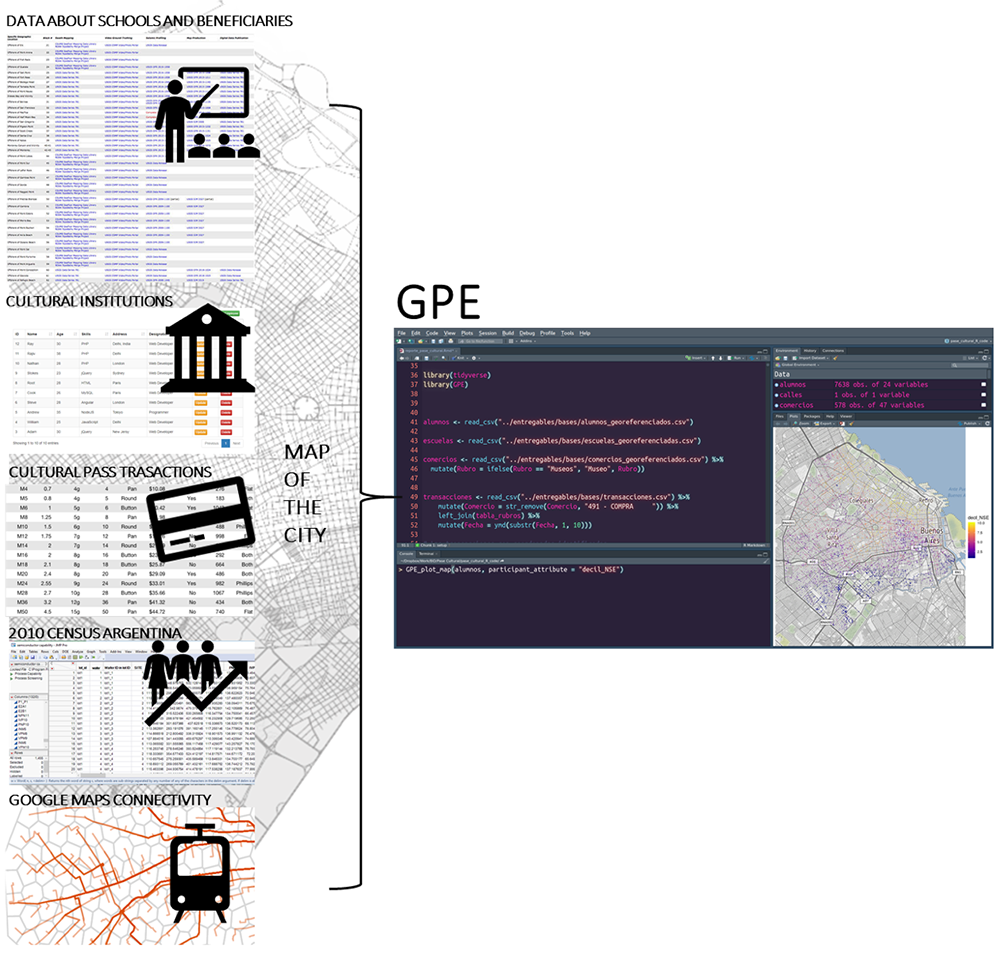
When none of the existing tools fulfilled the evaluation, analysis needs of this program, so a new coding program was developed in order to:
- Georeference postal addresses
- Obtain base maps with the urban grid of any city
- Estimate a matrix of distances between origin and destination
- Create metrics for frequency, group distribution and distance metrics of transactions / access among beneficiaries / consumers and supply points.
- Creating visualizations that allow exploring the difference between frequency and type of consumption by attribute[1] of the beneficiaries
Thus, we built the GPE tool, to run a georeferenced analysis of the cultural pass program or Pase Cultural. Starting with the address database and corresponding points of cultural consumption, we were able to visualize our findings, such as the fact that the activity of the most vulnerable cultural pass beneficiaries, commonly living further from points of cultural offering, is very similar to that of users living closer and with higher incomes (see figure 3).

The GPE tool allows the assignment of a color per characteristic. In this case, blue would represent the most vulnerable segment of the population, while yellow would represent the highest-income group. The map (Fig. 4) shows a cross-analysis between socioeconomic level and the location of schools with active users of the Cultural Pass.
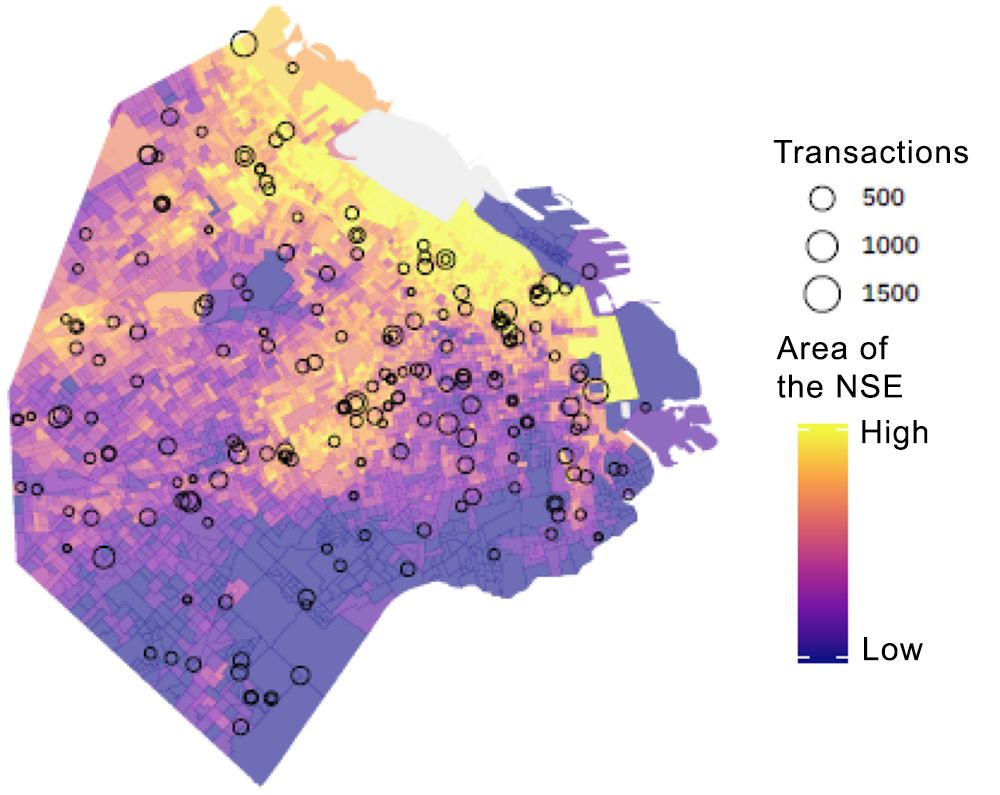
Several specific analytical tricks complemented the GPE tool[2]. For example, to assess connectivity, the surface of the City of Buenos Aires was divided into 200 cells with a radius of approximately 5 blocks each (average walkable distance[3]). Through automated queries to the routing system provided by Google Maps , an origin-destination matrix was compiled with 40,000 possible routes between the cells that contained the cultural supply points and those that contained the addresses of the participants. This allowed for the calculation of travel time between the point of cultural supply of the pass from a participant’s home or school. The overall average travel time on public transportation was 37 minutes. Table 1 shows travel times (average and maximum) by cultural category. Cinemas receive the closest audience, while museums and art bookstores require longer trips.
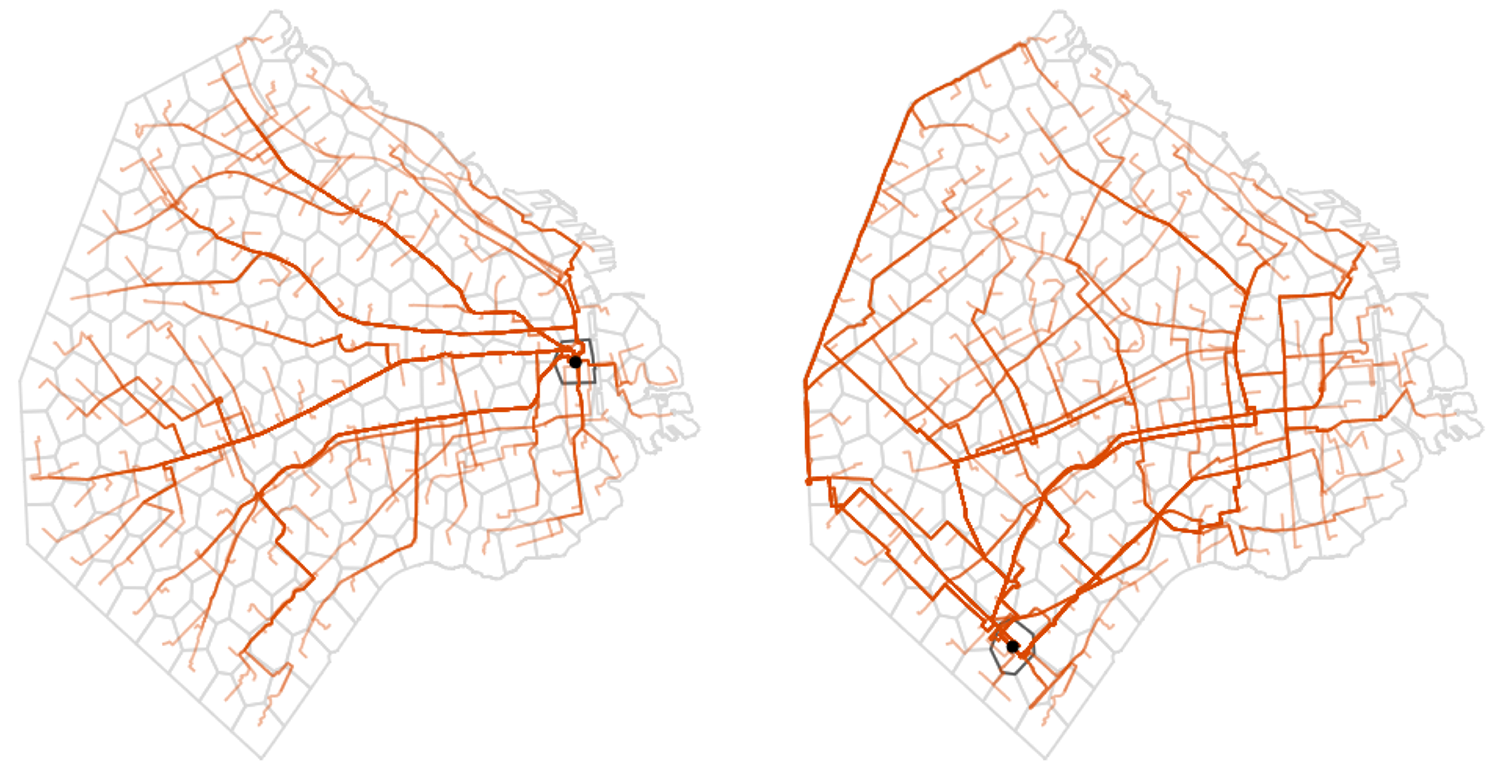

This detailed analysis was possible thanks to open source tools – incorporating existing tools into custom-built ones. In addition to meeting the needs of the continuous assessment of the Cultural Pass, the GPE tool will serve for the georeferenced analysis of similar programs in the future. It allows us to adjust the supply of benefits in relation to the conditions of the city, moving us towards real accessibility to public programs and fairer cities.
![Fig.6. Más detalles de la herramienta EGP en el blog asociado, abierto al Público [https://blogs.iadb.org/conocimiento-abierto/es/open-urban-planning-toolbox-planificacion-urbana/]](https://blogs.iadb.org/ciudades-sostenibles/wp-content/uploads/sites/17/2020/05/011_Tiempos-de-viaje-desde-hogares-a-oferta-cultural.png)
[1] An attribute is the characteristic of a beneficiary according to profile, such as gender, age, neighborhood, behavior in cultural transactions, etc.
[2] For more information and examples of this code, go to [https://gpe.netlify.com/articles/using_gpe]
[3] Buenos Aires public transport passengers walk an average of 4.5 blocks to get to their transport stop, according to INTRUPUBA [http://ondat.fra.utn.edu.ar/?p=1044]
Cover source: Buenos Aires Ciudad. Facebook. Musicales Baires Argentina. 10 de octubre, 2018. Edited by the IDB

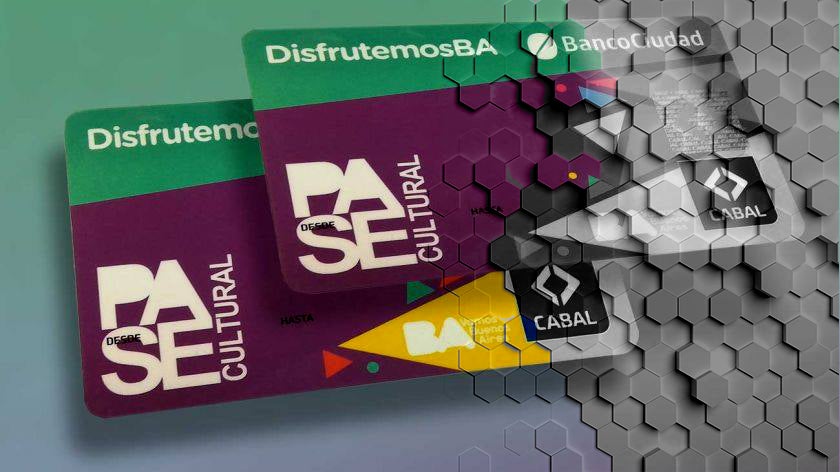
Leave a Reply